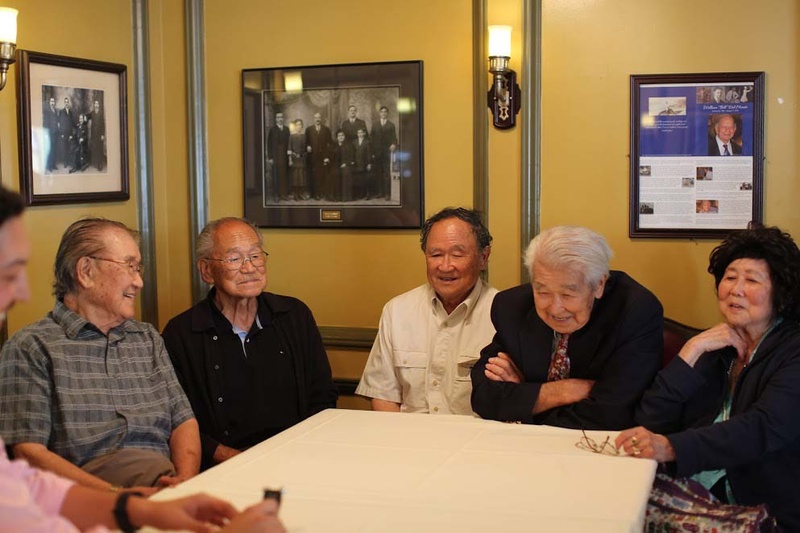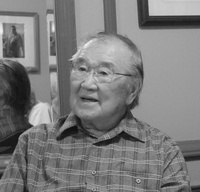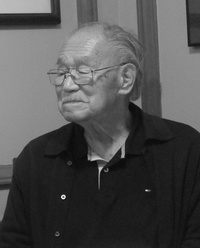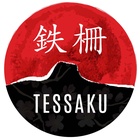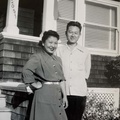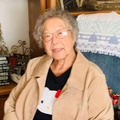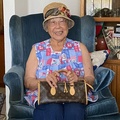“All my normal U.S. citizens rights were taken away from me, just for what? Japan went to war with America? We were Americans. That’s what I really resent.”
— Amos Oka
This Oka family roundtable provided a rare opportunity to hear five siblings in their late 80s and early 90s have a candid conversation about their memories from camp and WWII. While some of what the younger siblings remembered was light-hearted play and the older siblings remembered farming and hardship, all of them remember the residual sadness for what their Issei parents must have gone through, despite never speaking about it. “Papa had it tough. The father of the family, he lost that. Because the family didn’t exist anymore,” says Amos Oka, one of the eldest sons.
The family was originally from a Japanese American farming community in San Jose but are now spread out across the country. Flying in from Pennsylvania to Nevada, their return to the Bay Area bookended a somber occasion: The scattering of their older sister Mary (Shiz) and her husband Yutaka’s ashes under the Golden Gate Bridge. As the children and grandchildren recognized this could be one of the last times the siblings might be together and willing to talk, they spearheaded this conversation. Mary’s grandson Casey Coe led the questions while Michael Sera of the Japanese American Museum of San Jose helped moderate.
Here’s the list of the Oka siblings:
Lily (Yuriko), is the eldest daughter and was born on August 31, 1922 in San Francisco, CA.
Mary (Shizuko), was the second eldest daughter and was born on June 23, 1924 in Loomis, CA
George (Yutaka), the oldest boy, was born on August 4, 1926 in Newcastle, CA.
Amos (Kiyoshi) was born on April 20, 1928 in Florin, CA.
Eva (Masako) Nakano was born on June 12, 1931 in San Francisco, CA.
Jim (Makoto) was born on February 12, 1933 in Alviso, CA.
Robert (Tadashi) Oka was born on December 3, 1934 in San Jose, CA.
* * * * *
Casey Coe (CC): Before you went into camp, what was life like before the evacuation?
George: I was fourteen years of age when they came out with the proclamation. I was attending junior high school and we went from San Jose to Santa Anita and we were there for about three months until they were able to build a more permanent camp for us. And in this case we went to Heart Mountain, Wyoming, which was pretty desolate country. I think approximately 10,000 people were sent there. I believe the camp was open for four years. I was there for close to three years and I stayed there until I graduated high school at which time I felt that perhaps before being drafted into the army, I would go out and earn a little spending money for myself. So I went to Chicago where my father went to work on the railroad and I went to work in the food industry. I worked there for about eight months or close to year before being drafted into the U.S. Army.
CC: [To the younger siblings] Once you were in camp, was it fun? Were you aware of the situation?
George: When I went to camp, the big difference between that and San Jose was that our family was decentralized. At home, we were one cohesive unit. But life in camp, our family was spread apart. The children went out to play with other children and the parents had very little control over them. The kids had their own little group. The parents saw very little of their kids. Home was just a place to sleep. We lost that cohesiveness as a family. You’ll probably hear later how they probably formed a gang or a group of their own. I was a little bit more conservative, I would say.
CC: So, who was in the gang together?
Jim: We didn’t have a gang but I had maybe about five or six people who were my age. I was eight, or nine. So we weren’t too sophisticated, not too strong a gang. But still, we just hung around together and did bad things.
CC: So Amos, what were those bad things?
Amos: Everything that went wrong in Block 24, was me. I was the so-called gang leader. The number of things that happened I knew nothing about it but the block manager used to say that I did all these bad things to my father, and my father believed it. He blamed me for everything. I was fourteen to seventeen.
Eva: Amos was the tallest of this group, so they blamed him.
CC: What were some of the incidences you were blamed for?
Well, to start with, it’s cold in Heart Mountain. Minus 28 degrees. So we as teenagers used to go to the boiler room. It was too hard to do things outside. They accused me–or my gang–climbing up the thing and going over to the women’s room and watching the women’s toilet. And that was one thing I was blamed for. Another thing, I know for a fact that someone used to punch holes. Everything bad that was happening in the block was my fault.
CC: Was there any chance for you to deny that?
Amos: No, my father was a tough guy. At least to me. I had no way of talking back to him. He was the typical Japanese father.
CC: Speaking of your father and parents, what kind of parents were they, both before and after camp?
Eva: They were always working, both of them worked at the mess hall. They didn’t communicate with us. We never saw them. The boys were in one room and the girls were in the other. Not much raising.
Amos: Life wasn’t family.
Eva: And then my father went to work for the railroad, so he left after a while. So my mom was left.
Amos: I left early with my father back to San Jose, once they allowed us to go back to the West Coast. My father and I came out and we lived in the San Jose Buddhist Church and slept on the floor of the Methodist Church.
Michael Sera (MS): When you came back to Japantown, was it how you remembered it?
Eva: You couldn’t get a job. “We don’t hire Japs’ and all that kind of stuff.
MS: Even in Japantown?
Eva: Yep. We tried to get a job in the cannery. ‘No Japs hired.’ Anywhere you tried to find a job.
Amos: Listen to this. After I finished high school and I joined the army, and I was in the army and went to Germany. I came back and wanted to go to Cal Berkeley. So I register and now I have to find a place to stay. So you go to the housing department and they give you an address and phone numbers. I called the numbers and asked, ‘Do they rent to Japanese American veterans?’ ‘No, we’re Americans here.’ I couldn’t find a place to stay. It was very, very difficult because they said, ‘We’re all Americans here.’
Eva: Very prejudice.
Amos: It was an experience.
MS: But you persevered.
Amos: I went to Cal, got a place, eventually. A lady who had a living room.
*This article was originally published on Tessaku on September 20, 2017.
© 2017 Emiko Tsuchida


